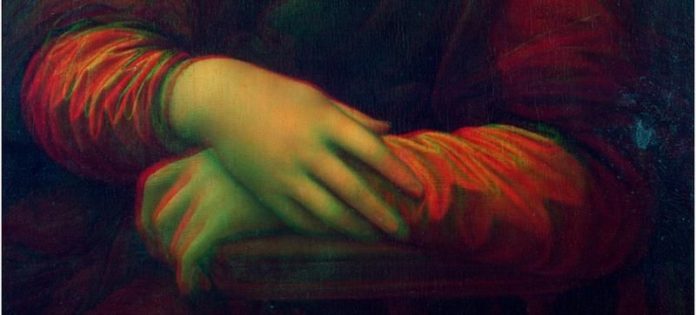Leonardo da Vinci’s Mona Lisa has been charming and fascinating her beholders for centuries. Now, she is entering a new dimension. Claus-Christian Carbon and Vera Hesslinger, vision scientists from the German Universities of Bamberg und Mainz, respectively, have reconstructed the process of her creation and have been able to show that the famous oil painting is part of the world’s oldest 3D composition.
In 2012, a sensational discovery was made in the Madrid’s Museo del Prado: Having removed layers of black overpainting from the background of a portrait previously considered to be an insignificant copy of Leonardo da Vinci’s Mona Lisa, the museum’s conservators were surprised to detect a strikingly high degree of similarity to the famous original. Leonardo’s Mona Lisa and the Prado version both show the same young lady in front of the very same mountainous landscape.
Two vision scientists from the Universities of Bamberg and Mainz have now been able to prove that the Mona Lisa and her Prado sister, while being quite similar indeed, were painted from two slightly different perspectives: By examining both versions, it is possible to recalculate the perspectives of both Leonardo and the second artist — possibly one of his scholars. This also allows for the reconstruction of the positions both painters took in relation to each other and to the sitter in Leonardo’s studio. Furthermore, the researchers have shown that the combination of the two perspectives is mathematically equivalent to human stereoscopic vision. Stereoscopic vision enables depth perception based on the slight horizontal disparity between the visual signals of each eye — a principle still used for 3D television today.
The scientists have been successful in creating partial 3D reconstructions of the depicted person. The spatial impression is strongest when looking at the lower areas of the combination of both paintings. The analysis of single landmark points has revealed that in these areas the shift in perspective between the two Mona Lisa versions is also most concordant with the horizontal disparity between the left and right eye.
Up to now, it was assumed that the earliest stereoscopic depictions had not been realized prior to the mid-19th century when British physicist Charles Wheatstone developed the stereoscope. Vera Hesslinger, a PhD student at the University of Mainz, explains: “It is really striking how well-matched the two paintings are. They are highly congruent except for this slight systematic difference in perspective. This is quite unique, especially when taking into account the very high quality and attention to detail. One would not expect this achievement before the invention of photography about 300 years later.”
Professor Claus-Christian Carbon of the University of Bamberg summarizes: “We are able to show that this pair of Renaissance-era paintings has stereoscopic — that is 3D — qualities. Whether or not Leonardo had actually planned the Mona Lisa to be a stereo-image can of course not be said for sure. But considering his deep interest in the laws of optics and human perception, we cannot exclude this possibility either.”
Carbon and Hesslinger’s article, “Da Vinci’s Mona Lisa entering the next dimension,” was recently published in the journal “Perception.” It includes 3D images of the Mona Lisa and a reconstruction of the original setting in Leonardo’s studio.
Carbon, C. C., & Hesslinger, V. M. (2013). Da Vinci’s Mona Lisa entering the next dimension. Perception, 42(8), 887-893. doi: 10.1068/p7524
Follow this link to find the article and further material:
www.experimental-psychology.de/SOM_CarbonHesslinger2013_MonaLisa3D.html
Contact:
Professor Claus-Christian Carbon, PhD
Department of General Psychology and Methodology (University of Bamberg)
Tel. +49 (0)1520 / 921 55 77, email: ccc@uni-bamberg.de
Dipl.-Psych. Vera Hesslinger
Department of General Experimental Psychology (University of Mainz) & Department of General Psychology and Methodology (University of Bamberg)
Email: vera.hesslinger@uni-bamberg.de














